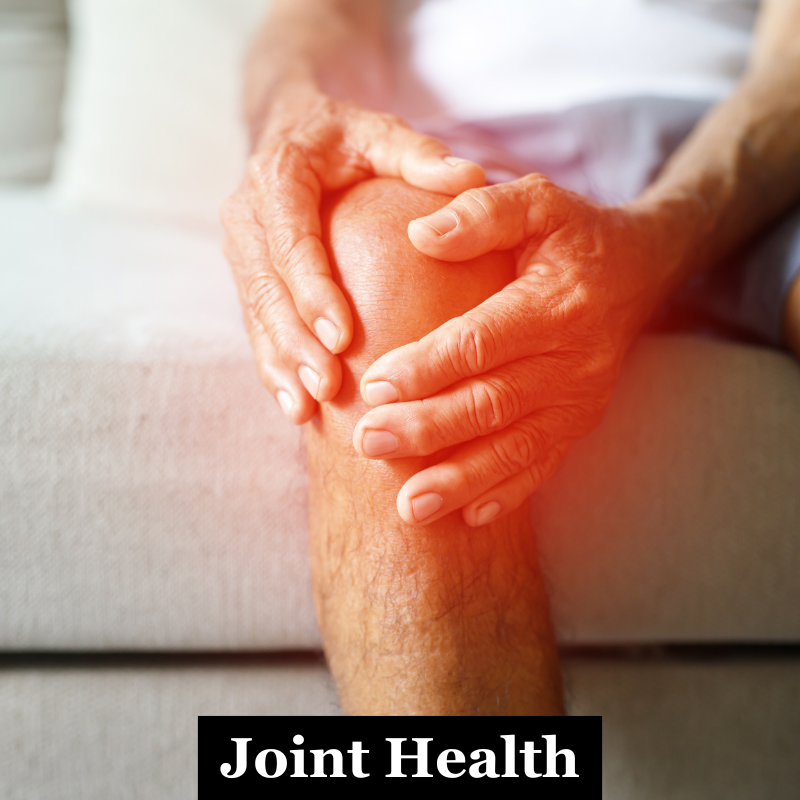Building Resilient Joints: Strength Training as Your Shield Against Aging Injuries

With my parents visiting this weekend, I always see a glimpse of my future. Gratitude comes to mind as my thoughts dwell on their health. Both my parents remain healthy, and the lack of any major medical problems brings fleeting flares of joy when they visit. My dad reached his seventies maintaining the vitality of someone 20 years younger, a rarity in this day and age.
It was disturbing, to say the least, when he returned from the park hobbling on one leg with my kids in tow. Perplexed by the story that unfolded, his the injury led me to write the article this week on joint health.
Busted Joints as we age
Joint pain, arthritis, stiff ligaments and rusty tendons describe the complaints of many older patients. Like many changes in the body as we age, the joints, consisting of muscles, ligaments, tendons and bones, wear down with time. Strains, tears and inflammation show up like fleas on a dog as our bones become brittle, tendons lose their elasticity and ligaments buckle under overuse without adequate recovery.
Misconceptions floating around about joint health.
Regular exercise wears down joints and causes osteoarthritis. Therapeutic exercise damages knee cartilage in people with osteoarthritis. The most annoying concern comes from people who think you cannot exercise if you have joint pain from arthritis. Another widely heard one crops up when the game as it relates to exercise therapy speeds up joint degeneration in knee osteoarthritis. Last, and my least favorite, people with arthritis should avoid exercise and prioritize rest. These are all false statements, and someone should ban them from being said.
Several studies following long-term runners repeatedly show low-impact running does not cause arthritis and may actually be protective of the cartilage in the joint space. Several large-scale comparison research concluded that therapeutic exercise does not harm knee cartilage and proves safe in patients who suffer from chronic knee arthritis. Furthermore, many studies from all over the world came to the same conclusion as it pertains to exercise versus anti-inflammatory medication to treat joint pain. Exercise wins the prize by a long shot. Contrary to popular belief, evidence shows exercise strengthens muscles and maintains joint function in arthritis, while excessive rest leads to stiffness and weakness.
Back to what happened to my dad. A soccer ball rolled in his direction from where some kids were playing. My dad kicked the ball, returning it in their direction, and then he felt a sudden, severe electric stabbing pain in his stabilizing leg. The knee swelled up to the size of a grapefruit, and he could barely walk for the next couple of days. Just from kicking a soccer ball. I think we underestimate the forces exerted on, for example, the knee joint during simple movements. Walking forces exert around 2 BW (the unit of force) to the knee joint. Running does around 4 and kicking a ball, well, that's about 9 BW. Sudden stomping to prevent a fall takes up even higher to about 11.5 BW.
In our youthful wonder years, the joints, ligaments and tendons are supple and ready for any daily explosive movements. As we get older, if we don't actively work to support our joints, the tendons, ligaments, and cartilage can dry out, become weak and stiff, and lose their ability to bounce back.
Movement, movement, movement
How we move the joints over time determines their resilience. Performing strength training prevents poor form and weakness. Progressive overload taken near failure strengthens connective tissues, tendons, muscles and ligaments, reinforcing the normal stability of our joints. One key finding: incorporating isometric holds and eccentric movements can enhance tendon health more effectively than dynamic exercises alone, with noticeable improvements in stiffness after just two months. Moreover, year-round training helps counteract age-related declines in tendon elasticity, combining well with activities like walking or cycling to maintain overall mobility
Focus on isometric (static holds), eccentric (controlled lowering), and compound movements for joint health. Train 2-3 times weekly, starting with bodyweight or light weights, progressing gradually. Begin with range-of-motion warm-ups like arm circles or leg swings.
- Squats/Lunges: Lower into squat like sitting in a chair; for lunges, step forward to 90° knees. Hold bottom 10-30s for tendon targeting. Builds leg strength/stability.
- Eccentric Heel Raises: Rise on toes, lower heel slowly (3-5s) below step; 8-12 reps/leg. Strengthens calf tendons/ankle ligaments.
- Planks/Wall Sits: Hold plank 20-60s or wall sit at 90°. Boosts core/lower body tissues without strain.
- Single-Leg Deadlifts: Hinge hips, lift one leg back with light dumbbells. Targets hamstrings/glutes/spinal ligaments for balance.
End
Kicking a soccer ball might seem safe enough, but without strong joints, injuries are likely. Correctly performed maximal squats apply about 10 times body weight of force to the knee joints. A life lived carefully and skillfully, protecting my joints, promised a future free from pain and the dreaded slow decline.